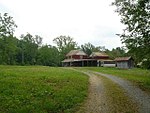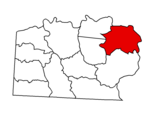Donnaha, North Carolina
Forsyth County, North Carolina geography stubsUnincorporated communities in Forsyth County, North CarolinaUnincorporated communities in North CarolinaUse mdy dates from July 2023
Donnaha (sometimes called Donnaha Station) is an unincorporated community along the Yadkin River in the Old Richmond Township of northwest Forsyth County, North Carolina, United States. Donnaha is named for the last chief of the Sauras.
Excerpt from the Wikipedia article Donnaha, North Carolina (License: CC BY-SA 3.0, Authors).Donnaha, North Carolina
Payne Road,
Geographical coordinates (GPS) Address Nearby Places Show on map
Geographical coordinates (GPS)
| Latitude | Longitude |
|---|---|
| N 36.227777777778 ° | E -80.432777777778 ° |
Address
Payne Road 7398
27050
North Carolina, United States
Open on Google Maps







